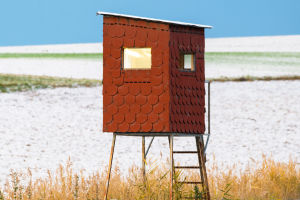A magnifying glass, a common optical tool in everyday life, can not only magnify small objects but also ignite materials under certain conditions.
This phenomenon primarily relies on the principles of light refraction and focusing. Below is a detailed explanation of how a magnifying glass works and how it can be used to start a fire.
Basic Principle
A magnifying glass is a type of lens, and its main function is to magnify objects by refracting light.
The surface of the lens is typically curved, and the magnifying glass commonly uses a convex lens. A convex lens is thicker in the center and thinner at the edges. This shape causes light passing through the lens to refract and converge at a single point.
When parallel rays of light pass through the magnifying glass, they are refracted by the lens and converge at a point known as the focal point. At the focal point, the energy density of the light is very high, which is why a magnifying glass can be used to ignite materials.
Principle of Ignition
The key to the magnifying glass’s ability to ignite materials lies in its capacity to focus sunlight into a very small area, thereby significantly increasing the light energy density. Here is the process:
1. Light Focusing: When sunlight passes through the magnifying glass, the light rays converge at the central part of the lens. Due to refraction, all light passing through the lens converges at the focal point. The focal point is where the light rays converge, and the light energy here is concentrated in a very small area.
2. Conversion of Light Energy to Heat: At the focal point, the energy density of the light is extremely high. This concentrated light energy rapidly converts into heat energy. The temperature at the focal point can reach very high levels, sufficient to ignite combustible materials.
3. Igniting Materials: When the temperature at the focal point is high enough, it will heat the material placed at the focal point until its ignition point is reached. For materials like paper, wood shavings, and cotton, the temperature at the focal point is enough to cause them to catch fire.
Practical Operation
In practical use, starting a fire with a magnifying glass requires attention to the following points:
1. Lighting Conditions: A magnifying glass requires strong sunlight to ignite materials, making it unsuitable on cloudy days or in weak light conditions. The best time to use it is on a sunny day.
2. Accurate Focusing: To effectively start a fire, the magnifying glass must be precisely aligned with the material to be ignited. The focal point must be concentrated on the surface of the material to generate sufficient heat.
3. Material Preparation: Choose suitable combustible materials such as dry paper, wood shavings, or cotton, as these materials are more easily ignited.
4. Safety Measures: Ensure that the surrounding environment is safe when using a magnifying glass to start a fire to avoid accidental fires. It is best to perform this activity in an open area and have a fire extinguisher or water source available just in case.
Applications
In addition to starting fires, magnifying glasses have many other applications:
1. Detail Observation: Magnifying glasses are commonly used to observe the details of small objects, such as when repairing precision machinery or examining microscopic biological samples.
2. Reading Aid: For those with poor vision, magnifying glasses can help in reading small text or fine print.
3. Educational Tool: In physics and optics education, magnifying glasses are important experimental tools used to demonstrate basic principles of light refraction and focusing.
Conclusion
A magnifying glass is more than just a simple tool for magnifying objects; its working principle involves light refraction and focusing. When used correctly, a magnifying glass can harness the light energy from the sun to generate enough heat at the focal point to ignite combustible materials.
This process illustrates the fascinating application of optical principles and reminds us of the importance of safety when using optical tools. Through scientific and careful use, a magnifying glass can serve a unique role and offer assistance in various situations.


